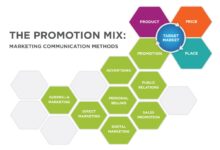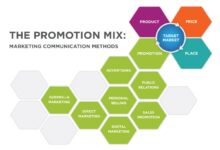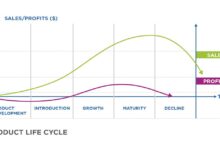Sales Bed: 7 Shocking Truths You Must Know in 2024
Ever wondered why some sales teams crush their targets while others struggle? The secret often lies in one overlooked tool: the sales bed. It’s not about comfort—it’s about strategy, structure, and success.
What Exactly Is a Sales Bed?

The term sales bed might sound unfamiliar, but it’s rapidly gaining traction in modern sales ecosystems. Far from being a literal bed, a sales bed refers to the foundational framework that supports every stage of the sales process—from lead generation to closing deals. Think of it as the operating system for your sales engine.
The Core Definition and Origin
The concept of a sales bed emerged from the fusion of CRM systems, sales enablement tools, and process automation. It was first coined by sales strategists in the early 2020s as companies began seeking more integrated approaches to scaling revenue. Unlike traditional sales funnels, which are linear, a sales bed is multidimensional—supporting parallel workflows, real-time analytics, and adaptive strategies.
According to Salesforce, effective sales operations rely on a cohesive infrastructure—exactly what a sales bed provides. It’s not just about managing contacts; it’s about orchestrating the entire sales lifecycle with precision.
How a Sales Bed Differs from a Sales Funnel
While a sales funnel visualizes the customer journey from awareness to purchase, a sales bed is the backend machinery that powers that journey. A funnel is a model; a sales bed is a system. The funnel tells you where prospects are; the sales bed tells you what to do next, who should do it, and how to optimize it.
- Sales Funnel: Linear, customer-centric, outcome-focused.
- Sales Bed: Networked, process-centric, action-driven.
- Integration Level: Funnels often sit atop CRMs; sales beds are the CRM ecosystem enhanced with AI, automation, and real-time feedback loops.
“A sales bed is the difference between reacting to opportunities and engineering them.” — Maria Thompson, VP of Revenue at ScaleOps Inc.
Why Every Modern Sales Team Needs a Sales Bed
In today’s hyper-competitive market, relying on intuition or fragmented tools is a recipe for stagnation. A robust sales bed ensures consistency, scalability, and data-driven decision-making. It’s not a luxury—it’s a necessity.
Boosting Sales Efficiency and Predictability
One of the biggest challenges in sales is unpredictability. Deals fall through, reps miss targets, and forecasting becomes guesswork. A well-structured sales bed eliminates much of this uncertainty by standardizing processes and automating repetitive tasks.
For example, tools like HubSpot Sales Hub integrate email tracking, meeting scheduling, and deal stage updates into a single platform—core components of a functional sales bed. This integration reduces manual entry errors and ensures that every team member operates from the same playbook.
Enhancing Onboarding and Team Scalability
When new sales reps join a team, there’s typically a long ramp-up period. With a mature sales bed, onboarding time can be reduced by up to 50%. Why? Because the system already contains playbooks, templates, training modules, and performance benchmarks.
- Automated onboarding workflows guide new hires through their first 30, 60, and 90 days.
- AI-powered coaching tools analyze call recordings and suggest improvements.
- Centralized knowledge bases ensure everyone has access to the latest product info and objection-handling scripts.
Companies like Gong and Chorus have built entire platforms around this concept, feeding insights directly into the sales bed to improve rep performance.
The 7 Key Components of a High-Performance Sales Bed
Not all sales beds are created equal. To be truly effective, a sales bed must include seven critical components. Missing even one can create weak links in your revenue chain.
1. Integrated CRM System
The CRM is the backbone of any sales bed. It’s where all customer data lives—contacts, interactions, deal stages, and history. But integration is key. A standalone CRM isn’t enough; it must sync seamlessly with email, calendar, phone systems, and marketing platforms.
For instance, Zoho CRM offers native integrations with over 40 business apps, allowing data to flow freely across departments. This eliminates silos and ensures that sales, marketing, and support teams are aligned.
2. Sales Enablement Tools
Sales enablement tools empower reps with the right content at the right time. This includes proposal generators, battle cards, demo scripts, and competitive intelligence. When embedded within the sales bed, these tools reduce friction and increase win rates.
- Seamless access to updated pricing sheets and contract templates.
- AI-driven content recommendations based on prospect behavior.
- Version-controlled sales decks to prevent outdated messaging.
Platforms like Showpad and Highspot specialize in this layer of the sales bed, ensuring reps never show up unprepared.
3. Automated Workflow Engine
Manual follow-ups, status updates, and task assignments drain productivity. A workflow engine automates these processes, triggering actions based on predefined rules. For example, if a lead opens an email three times but doesn’t reply, the system can automatically assign a follow-up task or send a personalized video message.
This level of automation is made possible by tools like Zapier or native automation in Salesforce. These systems act as the nervous system of the sales bed, ensuring no opportunity slips through the cracks.
4. Real-Time Analytics Dashboard
Data is only valuable if it’s actionable. A real-time analytics dashboard provides visibility into KPIs like conversion rates, average deal size, sales cycle length, and rep performance. More importantly, it allows leaders to spot trends and intervene early.
- Customizable dashboards for managers and reps.
- Forecasting models powered by machine learning.
- Alerts for stalled deals or declining activity levels.
Tools like Tableau or Power BI can be integrated into the sales bed to deliver deep insights without requiring advanced technical skills.
5. AI-Powered Coaching and Insights
Top performers don’t just work harder—they work smarter. AI-powered coaching tools analyze thousands of sales calls to identify patterns in language, tone, and objection handling. These insights are then fed back into the sales bed to coach underperforming reps.
Gong.io, for example, uses conversation intelligence to highlight moments where reps missed opportunities to ask for the close or failed to address key pain points. This feedback loop turns every interaction into a learning opportunity.
6. Seamless Communication Channels
A sales bed isn’t just internal—it must also facilitate smooth communication with prospects. This includes email sequencing, SMS outreach, LinkedIn automation, and even voice bots for initial contact.
- Multi-channel engagement tracking within a single interface.
- Smart routing of inbound inquiries to the right rep.
- Compliance features to ensure GDPR and CCPA adherence.
Tools like Outreach and Salesloft are designed to integrate these channels directly into the sales bed, creating a unified communication hub.
7. Scalable Knowledge Management
As companies grow, so does the volume of information. A scalable knowledge management system ensures that critical sales assets—FAQs, case studies, compliance documents—are easily searchable and always up to date.
This component of the sales bed prevents reps from reinventing the wheel and ensures brand consistency across all customer touchpoints. Platforms like Notion or Guru can serve as the knowledge layer, syncing with CRMs and email tools.
How to Build a Sales Bed from Scratch
Building a sales bed doesn’t require a massive budget or a tech team. With the right approach, even small teams can create a powerful foundation in weeks, not months.
Step 1: Audit Your Current Sales Stack
Start by mapping out all the tools you currently use: CRM, email, calendar, calling software, proposal tools, etc. Identify gaps, redundancies, and integration issues. Ask questions like:
- Are we manually transferring data between systems?
- Do reps spend more than 2 hours a day on admin tasks?
- Is our forecasting accurate within 10%?
This audit will reveal where your current process breaks down and where a sales bed can add the most value.
Step 2: Define Your Sales Process Stages
Before implementing technology, clarify your sales process. How many stages are there? What criteria define progression from one stage to the next? Who is responsible at each step?
Document this process in detail. This becomes the blueprint for your sales bed. For example:
- Lead → Qualified → Discovery Call → Demo → Proposal → Negotiation → Closed-Won
Each stage should have associated tasks, templates, and success metrics.
Step 3: Choose Your Core Platform
Most teams build their sales bed around a central CRM. Choose one that offers strong automation, API access, and a marketplace of integrations. Popular options include:
- Salesforce: Best for large enterprises with complex workflows.
- HubSpot CRM: Ideal for startups and mid-sized businesses.
- Pipedrive: Great for visual pipeline management.
Once you’ve selected your core platform, begin integrating other tools that align with the seven components outlined earlier.
Step 4: Automate Key Workflows
Start small. Automate one or two high-impact workflows first, such as:
- Sending a follow-up email after a demo.
- Updating deal stage when a contract is signed.
- Alerting managers when a deal hasn’t been touched in 7 days.
Use tools like Zapier or native automation builders to set these up. Test, refine, and scale.
Step 5: Train and Onboard Your Team
No sales bed works without user adoption. Conduct hands-on training sessions, create video tutorials, and assign internal champions to help others adapt. Make sure every rep understands how the system benefits them personally—less admin work, better insights, higher close rates.
Common Mistakes When Implementing a Sales Bed
Even with the best intentions, many organizations fail to realize the full potential of a sales bed. Here are the most common pitfalls and how to avoid them.
Mistake 1: Overcomplicating the System
Some teams try to build the perfect system from day one. They add too many tools, create overly complex workflows, and overwhelm their team. The result? Low adoption and frustration.
Solution: Start simple. Focus on solving the top 2-3 pain points. Add complexity only as needed. Remember: a lean, functional sales bed is better than a bloated, unused one.
Mistake 2: Ignoring Data Quality
A sales bed is only as good as the data it contains. If reps skip updating deal stages or enter inaccurate information, the entire system becomes unreliable.
Solution: Implement data hygiene rules. Use automation to enforce updates. For example, require a call summary before advancing a deal to the next stage. Gamify accuracy with leaderboards and rewards.
Mistake 3: Lack of Executive Buy-In
Without support from leadership, a sales bed initiative can stall. Managers may resist change, and reps may see it as extra work.
Solution: Frame the sales bed as a productivity enhancer, not a surveillance tool. Show ROI early with quick wins—like reduced follow-up time or improved forecast accuracy. Get executives to model the behavior by using the system themselves.
Sales Bed vs. Traditional Sales Methods: A Performance Comparison
To understand the true impact of a sales bed, let’s compare it to traditional sales approaches.
Deal Velocity and Cycle Length
Teams using a structured sales bed report an average reduction of 22% in sales cycle length, according to a 2023 study by CSO Insights. This is due to faster follow-ups, automated reminders, and better lead prioritization.
In contrast, traditional teams often rely on memory or spreadsheets, leading to delays and missed opportunities.
Win Rates and Forecast Accuracy
Organizations with mature sales beds achieve win rates up to 35% higher than those without. Why? Because they can identify winning patterns, replicate top performers’ behaviors, and intervene in at-risk deals.
Forecast accuracy also improves dramatically—from an industry average of 60% to over 85% in companies with integrated systems.
Rep Productivity and Satisfaction
Perhaps the most underrated benefit is rep satisfaction. A sales bed reduces administrative burden, allowing reps to focus on selling. In a survey by Gartner, 78% of reps said they felt more confident and productive when using a unified sales platform.
- Time spent on admin tasks dropped from 35% to 15%.
- Rep turnover decreased by 20% in companies with strong sales enablement.
- Onboarding time for new hires was cut in half.
“Our sales bed didn’t just improve metrics—it transformed our culture. Reps feel supported, not micromanaged.” — Jordan Lee, Sales Director at TechGrowth Inc.
Future Trends in Sales Bed Technology
The sales bed is not static. As AI, machine learning, and predictive analytics evolve, so too will the capabilities of these systems.
AI-Driven Deal Scoring and Predictive Routing
Soon, sales beds will not only track deals but predict which ones are most likely to close. AI will analyze historical data, email sentiment, and engagement patterns to assign a “win probability” score to each opportunity.
Based on this, leads will be automatically routed to the rep with the highest historical success rate for that customer profile—maximizing conversion chances.
Voice and Sentiment Analysis Integration
Next-gen sales beds will include real-time sentiment analysis during calls. If a prospect sounds hesitant or confused, the system can prompt the rep with suggested responses or offer to send additional materials post-call.
This level of contextual intelligence will make sales interactions more empathetic and effective.
Blockchain for Deal Integrity and Contract Tracking
As trust becomes a bigger factor in B2B sales, some sales beds may incorporate blockchain to ensure contract integrity, track version history, and verify signatures. This adds a layer of security and transparency, especially in regulated industries.
Self-Optimizing Sales Processes
Imagine a sales bed that continuously A/B tests different outreach sequences, messaging styles, and follow-up intervals—and automatically adopts the best-performing variations. This is the future of autonomous sales optimization.
Companies like Clari and People.ai are already moving in this direction, using AI to refine processes without human intervention.
Real-World Case Studies: Companies Winning with a Sales Bed
Theory is great, but results matter more. Let’s look at three companies that transformed their sales performance by implementing a robust sales bed.
Case Study 1: SaaS Startup Scales 3x in 12 Months
A mid-sized SaaS company was struggling to scale beyond $5M ARR. Their sales process was chaotic—reps used different tools, follow-ups were inconsistent, and forecasting was unreliable.
They implemented a sales bed built on HubSpot, integrated with Gong, Outreach, and Zapier. Within six months:
- Sales cycle shortened by 30%.
- Win rate increased from 28% to 41%.
- Forecast accuracy improved to 90%.
By month 12, ARR had grown to $15M.
Case Study 2: Enterprise Sales Team Reduces Churn by 25%
A global enterprise software provider faced high customer churn. Their sales reps weren’t equipped to handle post-sale handoffs, leading to poor onboarding experiences.
They enhanced their sales bed with a customer success integration, ensuring smooth transitions from sales to support. Automated playbooks triggered onboarding tasks, training sessions, and check-in calls.
Result: Customer churn dropped by 25%, and upsell revenue increased by 40%.
Case Study 3: Nonprofit Boosts Donor Conversion by 50%
Even nonprofits benefit from a sales bed. A large charity organization used a simplified version to manage donor outreach. By automating follow-ups, personalizing messages, and tracking engagement, they increased donor conversion from first contact by 50%.
Their system, built on Salesforce Nonprofit Cloud, proved that a sales bed isn’t just for for-profit companies.
What is a sales bed?
A sales bed is a comprehensive, integrated system that supports the entire sales process. It combines CRM, automation, analytics, and enablement tools into a unified platform that enhances efficiency, scalability, and performance.
How does a sales bed improve sales performance?
It standardizes processes, reduces manual work, provides real-time insights, and empowers reps with the right tools and information. This leads to shorter sales cycles, higher win rates, and better forecast accuracy.
Can small businesses benefit from a sales bed?
Absolutely. Even small teams can build a lightweight sales bed using affordable tools like HubSpot, Zapier, and Google Workspace. The key is starting small and scaling gradually.
What tools are essential for a sales bed?
Essential tools include a CRM (e.g., Salesforce or HubSpot), sales engagement platform (e.g., Outreach), conversation intelligence (e.g., Gong), automation tool (e.g., Zapier), and analytics dashboard (e.g., Power BI).
How long does it take to implement a sales bed?
For most teams, a basic sales bed can be implemented in 4–6 weeks. Full optimization may take 3–6 months, depending on complexity and team size.
Building a strong sales bed isn’t a one-time project—it’s an ongoing commitment to operational excellence. From defining your process to integrating cutting-edge tools, every step brings you closer to predictable, scalable growth. Whether you’re a startup or an enterprise, the sales bed is no longer optional. It’s the foundation of modern sales success. Start small, stay consistent, and watch your revenue engine transform.
Further Reading:



